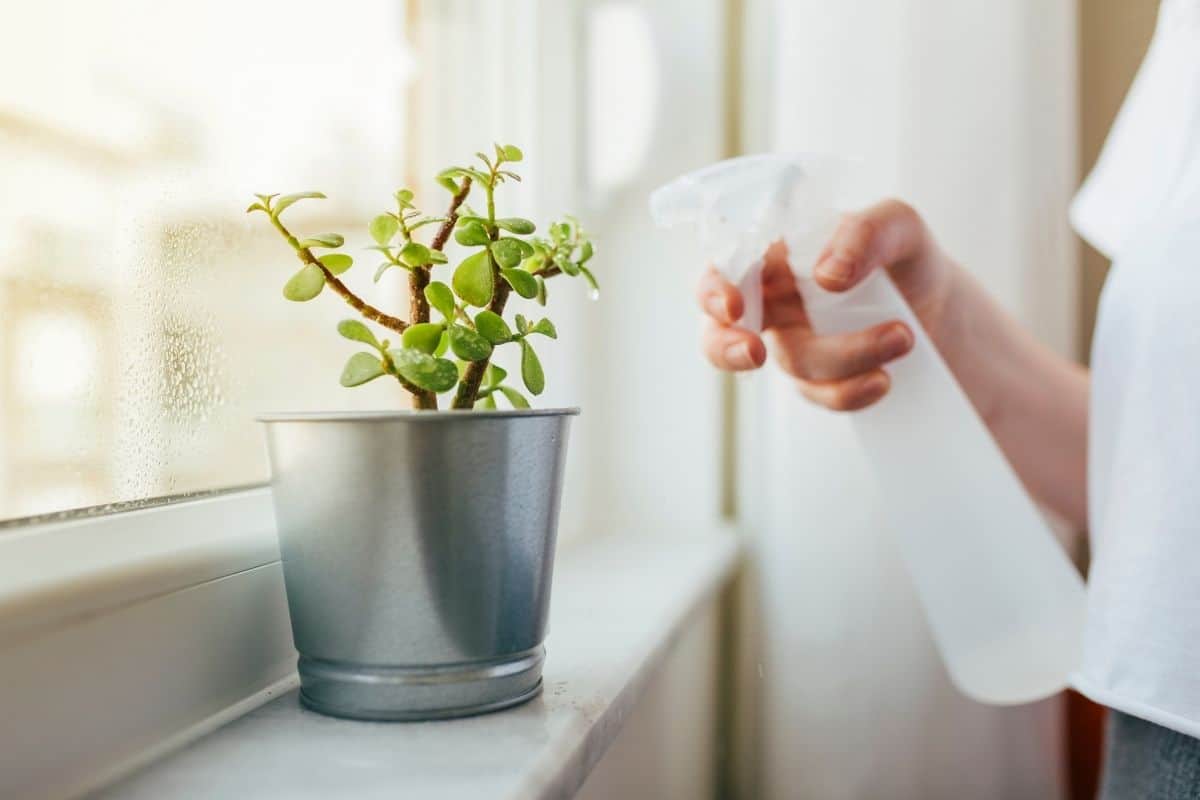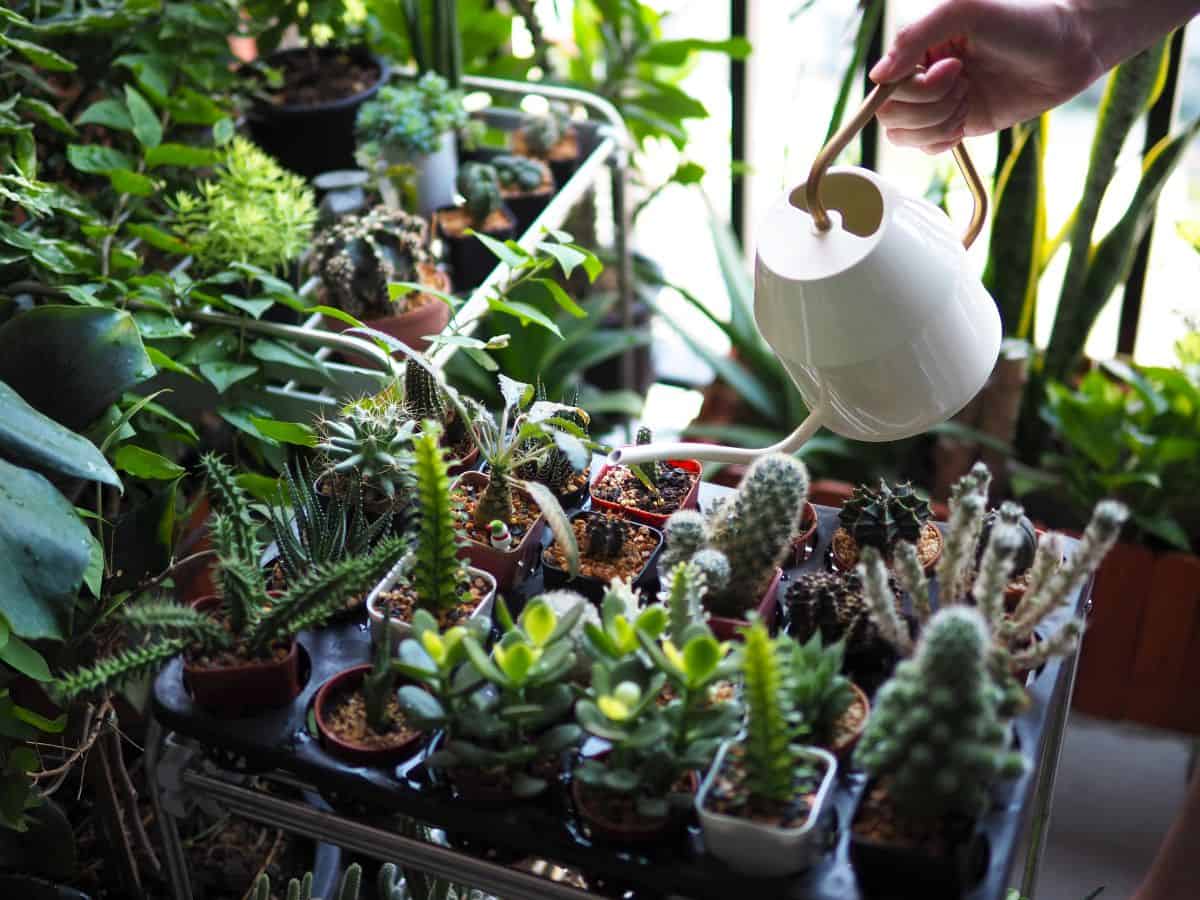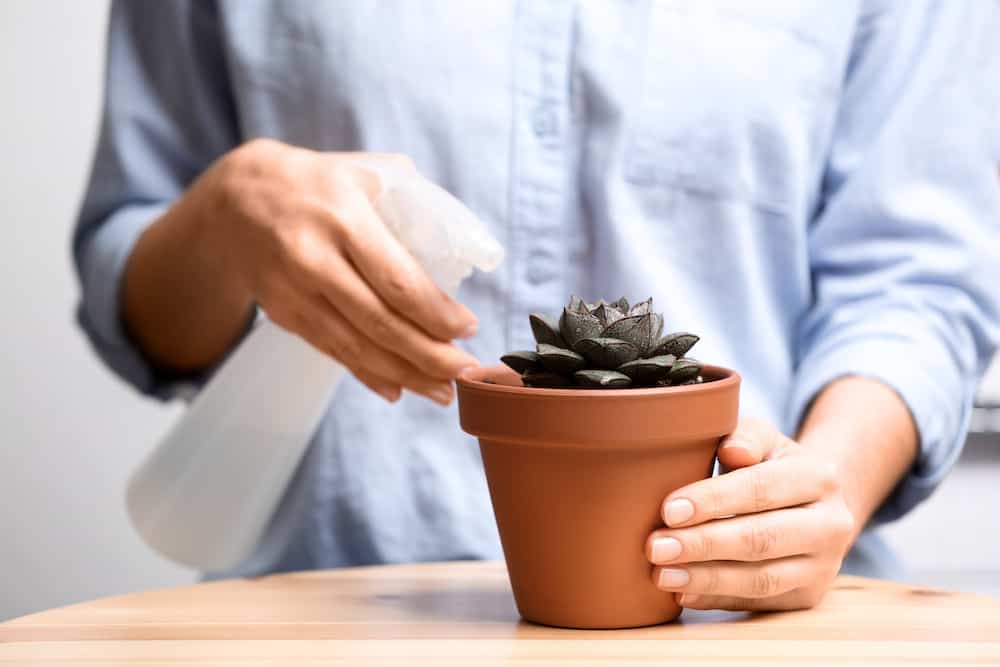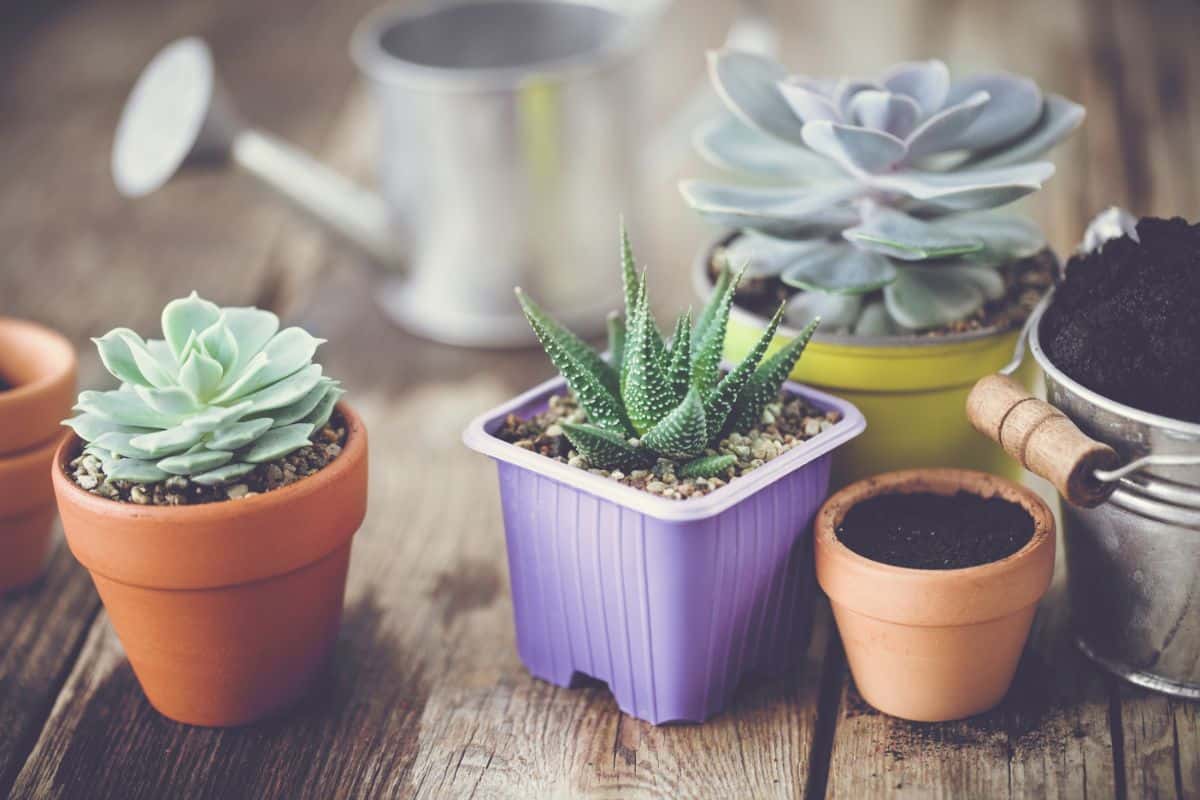
Any plant lover will tell you that succulents are the best plants to use in varied settings. You can plant them indoors or outdoors, and they can adapt to hot and cold weather. Nonetheless, caring for them can be challenging, especially when you cannot answer one crucial question.
"Is my succulent over or under watered?" Overwatering and underwatering are equally damaging to succulents.
So, as a plant enthusiast, it is vital to know the signs of these two conditions. The same applies to the measures needed to nurse the plant back to its best state.
Jump to:
Is My Succulent Over or Under Watered?
Succulents usually have a shallow root system, so their fleshy stems and leaves store most of the water. This extraordinary characteristic gives them the ability to survive in arid areas where water is scarce. Still, even if succulents can withstand long periods of drought, you need to water them from time to time.
Succulents have variable water-retention capabilities, depending on species, temperature, growth medium, humidity, and seasons. Consequently, maintaining a plant's good health is affected by several factors.
Properly watering them is among the important ones, as this can lead to further damage when done incorrectly.Read on the following information to give you an idea of how often you should water your succulents.
Factors That Influence How Often You Should Water Your Succulents
There is no one approach or fixed frequency in watering your succulents. Some may require more or less watering, depending on several factors.
Whether you are a beginner or a long-standing enthusiast, below are a couple of pointers to consider when watering your plants. Make sure to consider each one along with its suitability in your current setting.
- Seasons
Summer and spring are the most effective seasons for growing succulents. Consequently, you'll need to water them more frequently during this time than the rest of the year.
They need plenty of water available from the soil to grow new roots, stems, blossoms, and leaves. That said, it would help if you only water them once or twice when winter comes because the growing time is over.

It's safe to say that you can water them frequently during the summer and spring. Cutting back on watering them in winter or November to March is recommended too.
Keeping the logic of this explanation in mind will prevent the likelihood of overwatering your succulents.
- Container Size
Your plant will need less watering if it is in a large container. In this case, avoid overwatering it because there's more soil capable of retaining moisture and water. It can lock in both for a long time so that it won't necessitate frequent watering.
No products found.
On the other hand, your plant will need more watering if it is in a small container. As the soil dries out easily and quickly in this situation, you will need to water the plants more often. This keeps your succulents hydrated and prevents the drying of their leaves.
- Light Availability
Frequently water your succulents if they are in an area where they get at least ten hours or more sunlight in a day. Light facilitates growth, and sometimes, it can become too harsh for your plant.
Watering them often will help them cope and protect themselves from too much sunlight. It is safe to say that outdoor plants require more watering than those placed indoors.
- Humidity
Succulents in high humidity and cooler temperatures retain moisture longer than plants in hot and dry conditions. To put it simply, cut back on watering if you live in a cold and humid area. But if you are in a dry and hot setting, make sure to water your plants often.

Signs You Have Overwatered Your Succulents
What are the indications that suggest your plant is overwatered? You can observe and look out for expected changes in its overall appearance.
Looking at one can be confusing unless you know the reason why these happen.So let's have a glimpse of some of the areas you need to pay attention to in overwatered succulents.
- Shriveled, Soft, and Mushy Leaves
The leaves of an overwatered plant will be soft to touch. Shriveled but mushy and translucent leaves can also indicate that the plant absorbed an excessive amount of water.
- Dark Leaves
The leaves will begin to decay, and you will notice them turning dark in color. This frequently begins in the middle part of the plant, progressing up. It indicates that your succulent is rotting or has a fungal illness developed from the presence of excessive water.
- Falling Leaves
An overwatered plant will come to the point of dropping its leaves. The leaves may become too saturated with water, resulting in swelling and shedding. It may be unusual, but you can expect it to drop its leaves even from the lightest touch.
Signs You Have Underwatered Your Succulents

Keep an eye on the soil when caring for succulents. It is appropriate to put in only a little water when one inch of the top portion of the soil has dried off.
Watering your plants might be tricky if you don't have a clear timetable in place. Thus, make sure to establish regular checks for your plant's hydration.
An underwatered succulent can die in the worst scenario, so it is best to act swiftly when you discover an issue. To recognize an underwatered succulent, these are the signs to look out for:
- Shriveled Leaves
If your plant's water source continues to run low, its leaves will start to look wrinkly and shriveled. As the water shortage increases, the plant will start to droop and wilt. You can also observe some drying and cracking on your succulent leaves.
- Dead Leaves
Additionally, you may observe numerous dead leaves collected on the bottom of the plant. As your succulent begins to lose its water reserves, the leaves on the lower part dry out first. It will then move on to shed remaining leaves to conserve water and energy for survival.
- Unusual Texture and Feel
The leaves will feel flat and soft when you touch them. Instead of giving you the expected color, they will eventually turn brown.
Plumpness and rigidity will fade away when the leaves transition to this color. If a succulent's watering level is too low, the plant will physically feel like it has deflated leaves.
A Better Understanding of Underwatered and Overwatered Succulents
"Is my succulent over or under watered?" can now be answered. By knowing the causes of each condition, you can better understand the signs when they happen. There are many factors at play every time, and knowing how to maximize each one cangive your succulents better health.
Take a look at your succulent's setting and define its needs according to every factor involved. In this way, you get your money's value and improve the overall aesthetics and air quality from your succulents.

